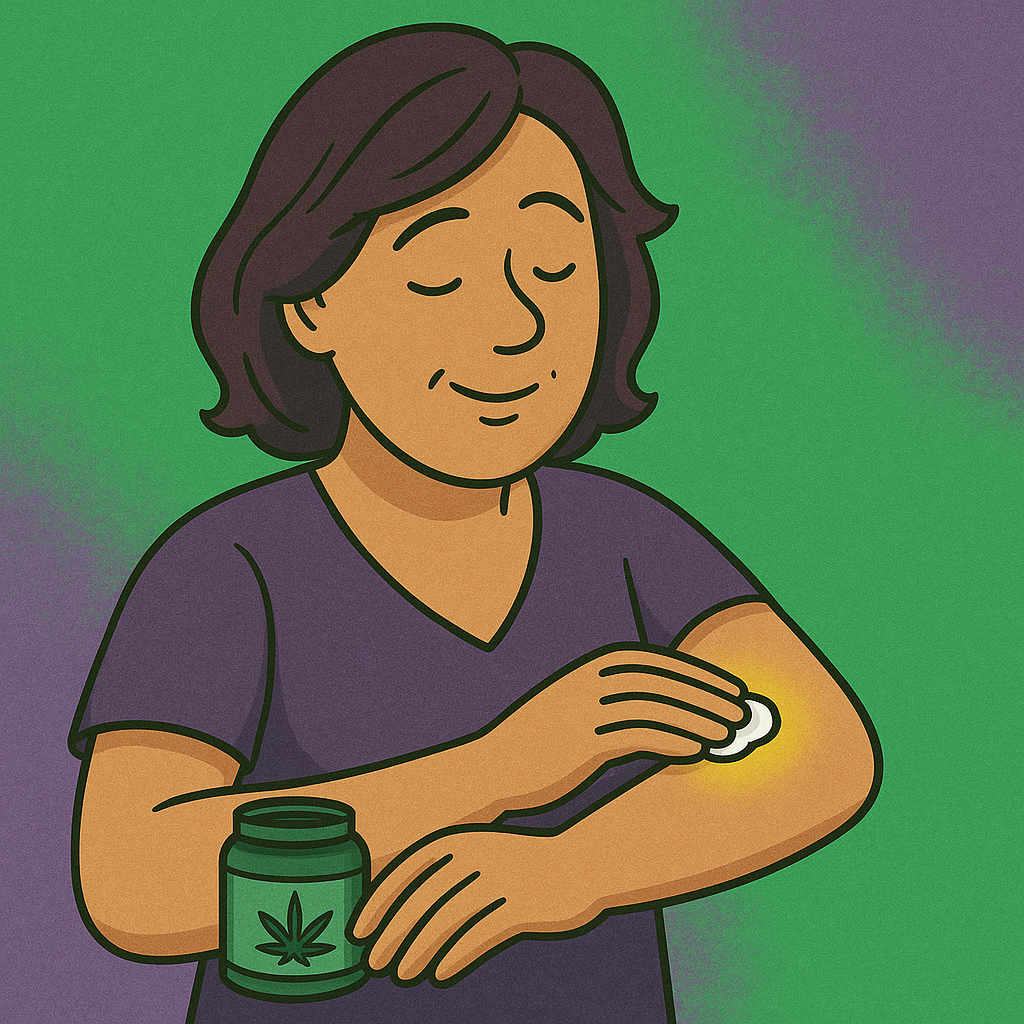Topicals: Using Medical Marijuana for Localized Relief
Cannabis-Infused Creams and Balms for Targeted Healing
Topicals offer a unique way to use medical marijuana, delivering localized relief without systemic effects. In the MediWeed Hub, we’re exploring how cannabis-infused creams, balms, and lotions can benefit patients with irie vibes. In this article, we’ll dive deep into the science of topicals, their benefits for specific conditions, how they differ from other methods, and practical tips for use. Whether you’re managing arthritis or muscle soreness, topicals can provide targeted healing—let’s discover this non-psychoactive method!

Topicals are cannabis-infused products—such as creams, balms, lotions, patches, or salves—designed to be applied directly to the skin, delivering cannabinoids and terpenes to a specific area without entering the bloodstream in significant amounts. Unlike inhalation or edibles, topicals do not produce a psychoactive “high,” even when they contain THC, because they don’t cross the blood-brain barrier. Instead, cannabinoids like THC and CBD interact with CB1 and CB2 receptors in the skin, muscles, and nerves, reducing localized pain and inflammation. A 2017 study in The Journal of Pain found that THC-CBD topicals reduced arthritis pain by 50% in patients, offering a non-invasive option for joint pain relief (Mayo Clinic).
The mechanism of action for topicals makes them ideal for conditions like arthritis, muscle soreness, neuropathy, and skin conditions such as psoriasis. THC and CBD in topicals bind to cannabinoid receptors in the skin’s endocannabinoid system, which regulates pain, inflammation, and immune responses locally. CBD also interacts with TRPV1 receptors in the skin, which mediate pain and heat sensation, further reducing discomfort. Terpenes like beta-caryophyllene (anti-inflammatory) and linalool (calming) enhance these effects, penetrating the skin to soothe inflammation and soreness. For example, a patient with rheumatoid arthritis might apply a CBD-heavy balm (e.g., 50 mg CBD per ounce) to their hands, feeling relief within 20–30 minutes that lasts several hours (Lyphe Clinic).
Topicals are particularly beneficial for patients who want to avoid psychoactive effects or systemic side effects like dizziness or dry mouth, common with inhalation or edibles. They’re also a smoke-free option, making them suitable for patients with respiratory issues like asthma or COPD. A patient with diabetic neuropathy might use a THC-CBD patch on their feet to reduce nerve pain without affecting their mental clarity, allowing them to continue daily activities. Topicals can also be used for dermatological conditions—CBD’s anti-inflammatory properties have shown promise in reducing psoriasis plaques, with a 2019 study in Clinical Therapeutics reporting a 60% improvement in symptoms after 12 weeks of use (Harvard Health).
The variety of topicals available allows for customization based on patient needs. Creams and lotions are lightweight and spread easily, ideal for large areas like the back or legs, while balms and salves are thicker, better for concentrated areas like joints or sore muscles. Transdermal patches deliver a slow, steady release of cannabinoids over several hours, perfect for chronic conditions requiring consistent relief. For example, a patient with chronic lower back pain might use a transdermal patch (10 mg THC, 10 mg CBD) for all-day relief, while someone with a sports injury might apply a cooling menthol-cannabis balm for immediate soothing. Many topicals also include additional ingredients like arnica (for bruising) or capsaicin (for heat), enhancing their therapeutic effects.
Compared to other methods, topicals offer targeted relief without systemic absorption, making them unique in the medical marijuana toolkit. Inhalation provides rapid, whole-body effects (2–5 minutes), and edibles offer long-lasting systemic relief (6–8 hours), but topicals focus on the application site, with effects starting within 15–30 minutes and lasting 2–4 hours (Lyphe Clinic). This localized action minimizes side effects, but it also means topicals won’t address systemic conditions like anxiety or nausea, which require cannabinoids to reach the brain or gut. Patients should apply topicals generously to the affected area, massaging gently to enhance absorption, and reapply as needed every few hours.
Practical considerations for topicals include choosing products with clear labeling of cannabinoid content—look for at least 50 mg THC or CBD per ounce for effective relief. Patients should test a small amount on a patch of skin first to check for allergic reactions, as some topicals contain additional ingredients like essential oils that may cause irritation. Topicals should be applied to clean, dry skin for optimal absorption, and patients should avoid open wounds or mucous membranes, as this can cause stinging or systemic absorption. Those with sensitive skin might prefer CBD-only topicals, as THC can be more irritating in some cases (Mayo Clinic). Regular use can provide cumulative benefits, especially for chronic conditions like arthritis.
Practical Tips
- Apply Generously: Use a liberal amount of topical (e.g., a dime-sized dollop) and massage into the affected area for 1–2 minutes to enhance absorption.
- Choose the Right Product: Use creams for large areas, balms for joints, or patches for all-day relief; look for 50 mg THC/CBD per ounce.
- Test for Sensitivity: Apply a small amount to a patch of skin first to check for irritation, especially if the product contains essential oils.
- Reapply as Needed: Effects last 2–4 hours—reapply every 3 hours for continuous relief, but avoid overuse on the same area to prevent skin irritation.
- Combine with Heat/Cold: Pair topicals with a warm compress for deeper penetration (e.g., arthritis) or a cold pack for acute injuries (e.g., sprains).
Key Takeaways
- Topicals deliver cannabinoids to the skin, targeting localized pain and inflammation without producing a psychoactive “high.”
- THC and CBD in topicals interact with skin receptors to reduce pain and inflammation, effective for arthritis, neuropathy, and psoriasis.
- Effects start within 15–30 minutes and last 2–4 hours, offering targeted relief without systemic side effects, ideal for patients avoiding psychoactivity.
- Types include creams, balms, patches, and salves—creams for large areas, patches for chronic conditions, with added ingredients like arnica for extra benefits.
- Apply to clean, dry skin, test for sensitivity, and reapply every few hours, choosing products with at least 50 mg THC/CBD per ounce for efficacy.













